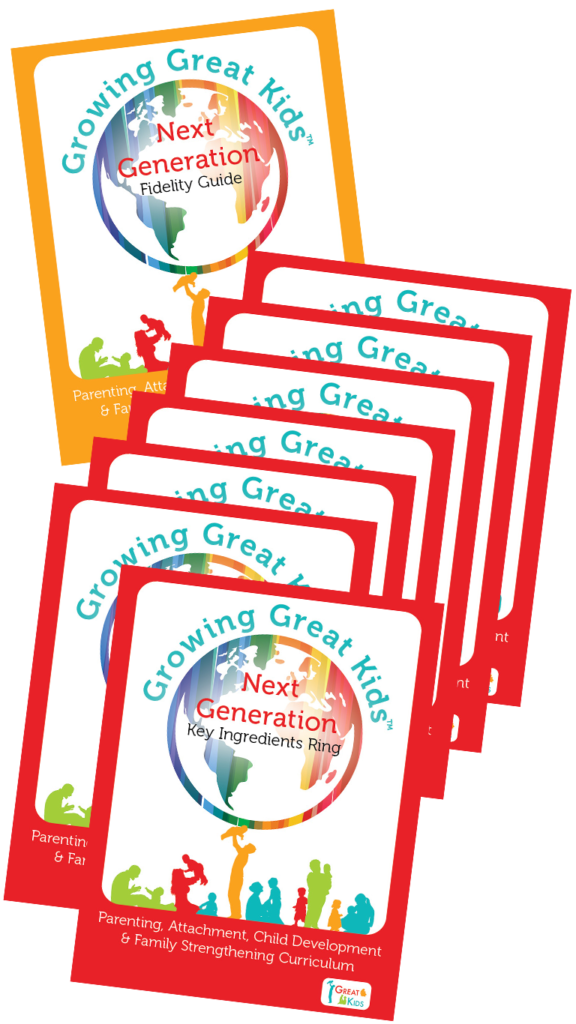Imagine a sweet 6-month-old baby girl tucked in the arms of her father as he reads her a bedtime story. She snuggles in close to his chest as he calmly sways her back and forth in a rocking chair. As he exaggerates his voice with the story, the baby reaches her hands for the book and pats the pages with excitement. The father continues with the story as the little one grasps for his face to find reassurance in his presence…the one who soothes her every night before she is put to bed. This beautiful moment occurs every night between this sweet father and daughter and it always begins with a book.
Reading to infants is encouraged in American society. Research has clearly confirmed the benefits children receive from being read to in the early stages of life. According to Murray and Egan (2014), we have known for a long time that there is a connection between language and literacy. Organizations like the American Academy of Pediatrics (2014), the Canadian Pediatric Society (2018), and the Centers for Disease Control and Prevention (2017) recommend that reading to children should begin during infancy. Despite the abundance of literature that encourages reading in early infancy, research suggests that, on average, parents begin reading with their babies at around 7 to 9 months (Murray & Egan, 2014). We may look at this research and think losing 7 to 9 months of reading time is not that significant considering parents have an infant’s entire childhood to read and tell stories. Though this research may seem insignificant when looking at the whole picture, researchers are finding that WHEN parents begin reading to their infants matters.
Researchers like Thacker (2014) explain that when caregivers can establish a reading routine before children turn 2 years of age, children can be exposed to a rich vocabulary that betters their language development and sets the stage for future exposure to reading materials. The American Academy of Pediatrics (2017) has released new research that suggests reading with young infants is linked to enhancing their vocabulary and reading skills four years later. Murray and Egan (2014) report that children undergo a rapid pace of development between 9 to 12 months of age. This explains why the amount of time a parent reads with their child at 9 months can predict a child’s vocabulary at 34 months and even at 58 months of age.
Research is consistent in demonstrating that reading during infancy can have a multitude of benefits for children. It supports their literacy, language, vocabulary, and writing development (American Academy of Pediatrics, 2017; Holland, 2007; Murray & Egan, 2014; Thacker, 2014). Most home visitors are aware of these developmental benefits, but did you know that reading during infancy is linked to more than just these developmental benefits? Research is now finding that reading during infancy does much more than provide a child with rich reading and vocabulary skills.
As we go about our day in home visiting, we know that each of us has one characteristic in common…we are all trying to promote parent-child engagement. Research is providing great news for home visitors! When reading begins early, children experience a stronger parent-child relationship (American Academy of Pediatrics, 2015). According to Thacker (2014), “As soon as an infant can sit on a caregiver’s lap, the child can learn to associate the act of reading with a sense of being loved” (p.16). How amazing is it that a tiny infant can learn that reading time means Mommy and Daddy love me? Reading to infants is so much more than teaching babies words; reading is an opportunity for a parent and child to spend time together enhancing their growing bond.
Home visitors understand that the idea of reading to an infant is challenging to some families for various reasons. Some caregivers may struggle with literacy, while others may not feel confident in their reading abilities. We must remember to be sensitive to the parents we serve, but we also have to spread the word that parents do not have to be great readers in order to have reading time with their babies. Research reminds us that until children attend school, they spend more time looking at pictures in books as opposed to the words (Thacker, 2014). The Canadian Pediatric Society (2018) shares that babies love to look at pictures in books and that simply talking to an infant about the pictures in a book is beneficial. As a GGK home visitor you also have access to amazing activities like the Talking Box Book where parents can simply tell a story using a decorated box. This means that parents can tell a story to their baby without having to read words. Also know that any Cues and Communication module can support you in encouraging parents to focus on vocabulary and language skills but be aware that there are activities and subsections throughout the curriculum that encourage reading parent-child reading time. Please see the provided list below:
GGK Birth to 12 Months
4-6 Months: Play and Stimulation
Activity: Picture Storybook
7-9 Months: Cues and Communication
Activity: Talking Box Book
7-9 Months: Physical and Brain Development
Subsection: Read Now…Read Forever
Activity: Read to Me
10-12 Months: Physical and Brain Development
Activity: Bedtime Stories
GGK 13-24 Months
13 to 15 Months: Play and Stimulation
Subsection: Reading: Making Words Live
Activity: A Book About Me
19-21 Months: Play and Stimulation
Activity: Going to The Library
22-24 Months: Cues and Communication
Subsection: Reading: Making Words Live
Activity: The Word for The Day
25-30 Months: Cues and Communication
Activity: Color Me A Story
31-36 Months: Cues and Communication
Subsection: Making the Most Of Storytime
Activity: Where, What, And Why Storytelling
As you go about your home visits this month, remember that a book is more than words; it is the start of a beautiful lifelong parent-child bond.
References
American Academy of Pediatrics. 2014. Healthy children radio: Reading aloud to infants.
Retrieved from: https://www.healthychildren.org
American Academy of Pediatrics. 2015. Parent child reading and story time promote
brain development prior to kindergarten. Retrieved from: https://www.aap.org
American Academy of Pediatrics. (2017). Reading with children starting in infancy gives
lasting literacy boost. AAP News & Journal Gateway. Retrieved from:
http://www.aappublications.org
Canadian Pediatric Society. (2018). Read, speak, sing to your baby: How parents can
promote literacy from birth. Retrieved from: https://www.caringforkids.cps.ca
Centers for Disease Control and Prevention. (2017). Developmental milestones.
Retrieved from: https://www.cdc.gov
Holland, J. (2008). Reading aloud with infants: The controversy, the myth, and a case
study. Early Childhood Education Journal, 35(4), 383-385. doi:10.1007/s10643-007-0203-6
Murray, A., & Egan, S. M. (2014). Does reading to infants benefit their cognitive
development at 9-months-old? An investigation using a large birth cohort
survey. Child Language Teaching & Therapy, 30(3), 303-315.
doi:10.1177/0265659013513813
Thacker, D. C. (2014). Playing with the text: The importance of sharing books with
babies. International Journal Of Birth & Parent Education, 2(1), 15-17.
Retrieved from: web.a.ebschohost.comeb.a.ebscohost.com Does reading to infan10.1177/0265659013513813


